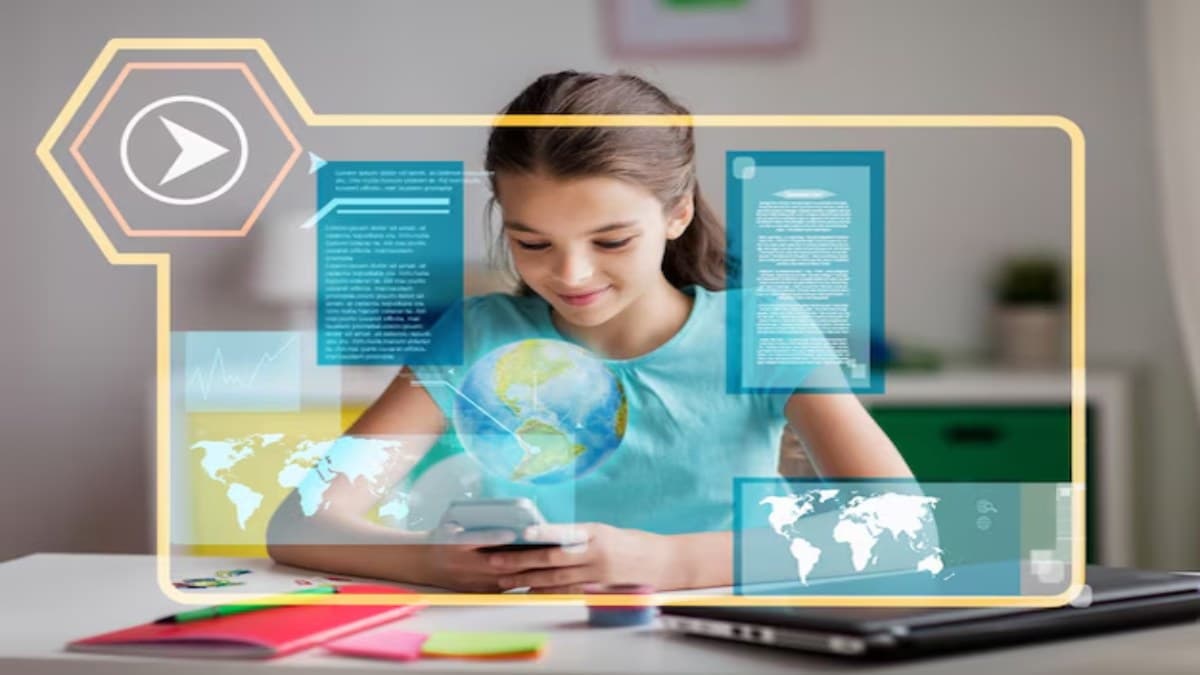How to Use Technology in Education to Enhance Learning and Skill Development?

In today's modern world, using technology in education for learning is other than just a passing trend; it's a solid tool through which the entire paradigm of the learning and skill-building process among students can change. There is integration from interactive applications to online resources, which have several advantages that help enhance engagement and effective learning. In this paper, we discuss some points on how using technology in education will enhance learning and development of skills, give examples of successful use of technology in the classroom, and provide tips on how to maximize technology integration to create academic success.
The Benefits of Integrating Technology into Education
The use of technology in education opens up huge avenues of possibilities for enhancement in learning. Here's how technology integration in education can be useful for the students:
1. Personalized Learning
One of the major benefits that can be harnessed from using technology in education is personalized learning. It is quite easy for adaptive learning software and educational apps to enable students to work at their own pace, provide personal feedback, and perform their work in areas where they may need significant improvement. Personalization at this level can surely help in satisfying the needs and learning styles of each student.
2. Increased Engagement
Aspects that make learning more interactive and interesting. For example, using technology in education in classrooms can be availed through the use of educational games, Virtual Reality, and interactive simulations that turn usual lessons into vibrant activities; hence, the student's interest is directed toward learning due to increased involvement.
3. Access to a Wealth of Resources
Technology integrated into education opens an entirely new world of resources for the student. From online encyclopedias and learning videos to simulations with which interactions can be made, the internet has everything. Accessibility ensures that on subjects, students attain deep knowledge and understand things with more comprehension.
4. Facilitating Collaborative Learning
Using technology in education enhances collaboration among students through online forums, group chats, and shared workspaces. This way, it allows students to collaborate on projects, share ideas, and learn from each other, among others, without them having to be in the same physical place.
5. Development of 21st Century Skills
It helps students acquire important 21st-century skills in digital literacy, critical thinking, and problem-solving. Mastery of such skills is central to a student's future academic and professional success.
Examples of Technologies That Improve Student Learning
There are many examples to show that using technology in education enhances student learning. Some of the effective tools are as follows:
1. Educational Apps
Examples of such technology used in the classroom include Duolingo, the language-learning application, and Khan Academy for other subjects. These make learning new concepts more fun and interactive, and their progress is charted via quizzes and games.
2. Interactive Whiteboards
More often than not, technology inclusions in education come with the provision for interactive whiteboards. They give a leeway for teachers to share lessons, annotate texts, and connect to multimedia resources in real time to make lessons even more interactive and visually appealing.
3. Virtual and Augmented Reality
Technology in education can also be identified with the development of interactive learning processes through Virtual and Augmented Reality. Examples include virtual reality, that may send students back into historical events or take them on field trips to places far from their schools, and augmented reality, which projects digital information onto the existing physical world to innovate new ways of interactive learning.
4. Online Learning Platforms
Other examples of technology integration include learning platforms such as Google Classroom and Blackboard. These tools organize classroom management, provide an accessible means of communicating, and deliver course materials on campus and virtually.
5. Coding and Robotics Kits
Technology as a teacher could also be specific to coding and robotics kits: devices like LEGO Mindstorms teach students to program and solve problems actively, building both creativity and technical skills.
6. Videos and Podcasts for Learning
Videos on sites such as YouTube for education and podcasts are good examples of technologies that enhance learning among students. In this regard, they avail an opportunity for visual and auditory learning through the description of complicated concepts in ways that the learners can easily understand.
How Technology Helps in Education?
How technology assists in education is realized by looking at the changes it brings about in different aspects of learning, including:
1. Improves Understanding of Difficult Concepts
Using Technology in education helps deconstruct ideas into more decipherable pieces. Interactivity diagrams, simulations, and other forms of visual aids can show scientific processes or historical events much more dynamically than traditional modes of instruction allow.
2. Independent learning is encouraged.
Technology gives students the facility to do some exploration on their own. Online research databases and educational websites stimulate self-learning and help students find answers to many questions.
3. Facilitates Real-Time Feedback
With many learning technologies, assignments and quizzes can be instantly graded, and results are provided to the learners. This helps the learners to comprehend where they went wrong and learn from their mistakes more efficiently, which also is one of the benefits of integrating technology into learning.
4. Supports Diverse Learning Styles
Different tools serve varied learning styles. While visual learners appreciate videos and interactive graphics, audio learners enjoy podcasts and audiobooks. The variety makes sure that all students can engage in ways they are best suited for.
5. Prepares Students for the Future
Working knowledge of digital tools and platforms is highly regarded in the modern workplace. Using technology in education at the school level also prepares students for both academic and professional settings with critical digital skills.
Best Practices for Technology Integration in Education
The meaningful use of technology in education requires deliberate planning and execution. Following are some guidelines that ensure the successful use of technology in the classroom.
1. Define Clear Educational Outcomes
Before implementation, the technology should identify educational goals. It will be nice to outline the way technology is to be applied in pursuit of the attainment of learning objectives and further improvements in the outcomes of students. Clarity on this matter supports the proper choices in the use of application tools and their effectiveness measures.
2. Appropriate Application of Tools
The technologies selected should align with the educational goals of the project and with the needs of students. Again, these include considerations such as ease of use and accessibility and the degree to which the tool supports learning objectives.
3. Training and Support
Training of teachers and students in the use of technology is required. The management is also supposed to provide support and professional development necessary for utilizing full benefits concerning integration technology use.
4. Introduction of Technology
Technology should be introduced gradually; this should start by introducing a couple of tools, and then introducing new tools as students become comfortable with them. This is one way of introducing technology in bits so as not to overwhelm the students or teachers.
5. Monitoring and Assessment
Regular monitoring and assessment of the technology concerning its effectiveness might be through student-teacher feedback or an assessment if the technology met the intended goals. Make modifications where necessary in ways that enhance the impact.
6. Digital Citizenship
Enable students to practice responsible use of technology in matters of safety, ethical behavior, and etiquette. Good digital citizenship should be propagated so that students make positive and responsible use of technology.
7. Encourage Collaboration
Apply technology to student collaboration: Integrate online collaborative tools that allow students to group work, give and receive peer feedback, and collaborate on projects to refine their teamwork and communication skills.
8. Meet Individual Needs
Technology can be harnessed to address the diversifying learning needs. For instance, students with disabilities may benefit from assistive technologies, while personalized learning platforms may consider differentiated learning styles.
9. Involve Parents and Guardians
Involve parents and guardians in integrating technology into the school process by updating them on the technology integrated into the classroom and how they might further support their child's learning at home.
10. Assess and Reflect
Regularly assess the effectiveness of technology regarding student learning, reflecting upon its effectiveness. Consider successes and challenges to create continuous improvement of technology integration in education strategies.
Conclusion
Learning and skill development can be granted with unrivaled opportunities through integrating technology. Engagement in education with technology can avail learners of several privileges such as personalized learning experiences, captivating content, and limitless resources that enhance learning outcomes. Truly authentic technology used in the classroom translates static lessons into interactive experiences better preparing students for success upon graduation.
Embracing technology as a teacher, and putting its core into good use, helps the students hone their skills to improve their performance in academics. Remember, to achieve greater heights, more so when availing of the opportunities presented by integrating technology into education, it is less about the tools that you decide to use and more about an evolution in how you are learning and growing. Unlock all the potentials of technology to change your learning and build a bright future.
FAQs
1. How does technology develop any particular skill?
Technology develops certain skills through various interactive tools and resources which enhance the learning experience and allow practical interaction.
2. How does technology contribute to learning and development?
Technology contributes to learning and development through the various ways in which educational resources are accessed, personalized learning experiences, and feedback.
3. How does technology help us learn new skills?
Technology enables the learning of new skills through online courses, tutorials, and simulations, thus making complex topics more accessible and interesting.
4. What contribution has technology made to knowledge development?
Technology has contributed a great deal to knowledge development by making access to information easy and fast, enabling collaboration in learning, and by providing novelty learning tools.
We hope you liked the above article. Please do not forget to share this blog with your friends and community members to spread awareness of "Using Technology in Education”
Other Related Sections
NCERT Solutions | Sample Papers | CBSE SYLLABUS| Calculators | Converters | Stories For Kids | Poems for kids | Practice Worksheets | Formulas I Blogs
Admissions Open for
CBSE Schools In Popular Cities
- CBSE Schools in Bangalore
- CBSE Schools in Mumbai
- CBSE Schools in Pune
- CBSE Schools in Hyderabad
- CBSE Schools in Chennai
- CBSE Schools in Gurgaon
- CBSE Schools in Kolkata
- CBSE Schools in Indore
- CBSE Schools in Sonipat
- CBSE Schools in Delhi
- CBSE Schools in Rohtak
- CBSE Schools in Bhopal
- CBSE Schools in Aurangabad
- CBSE Schools in Jabalpur
- CBSE Schools in Jaipur
- CBSE Schools in Jodhpur
- CBSE Schools in Nagpur
- CBSE Schools in Ahmednagar
- CBSE School In Tumkur











